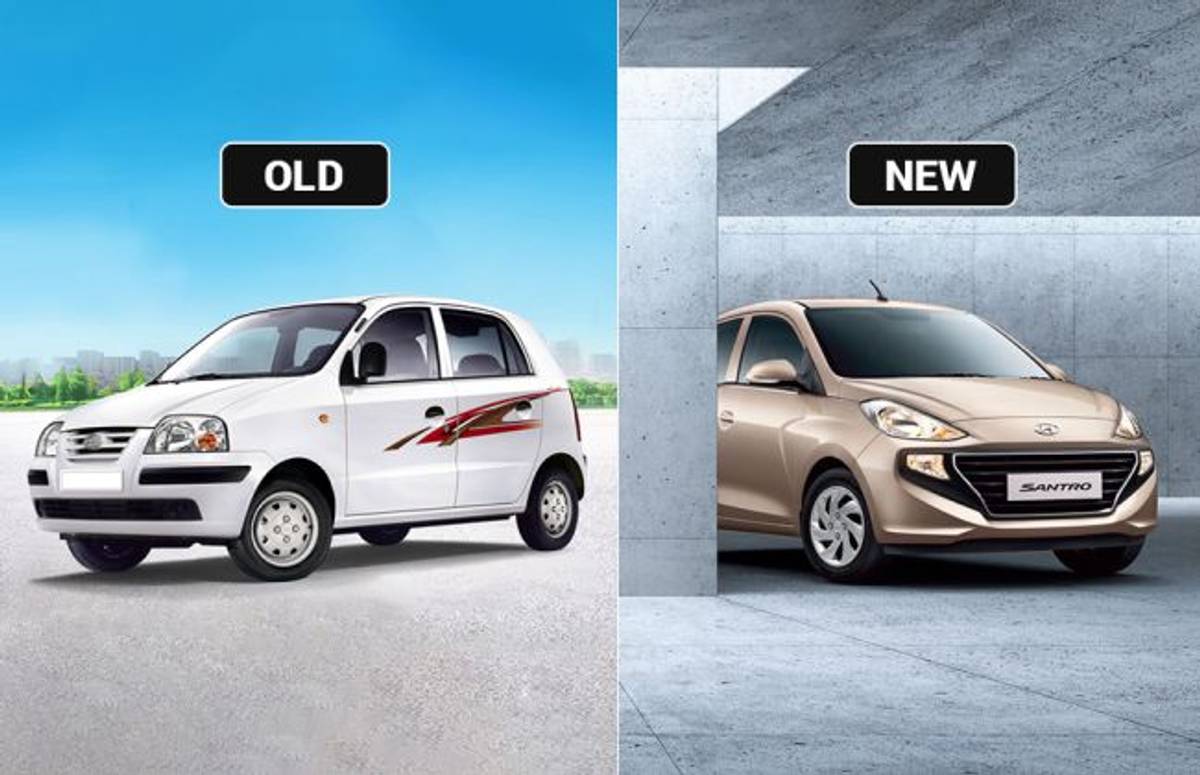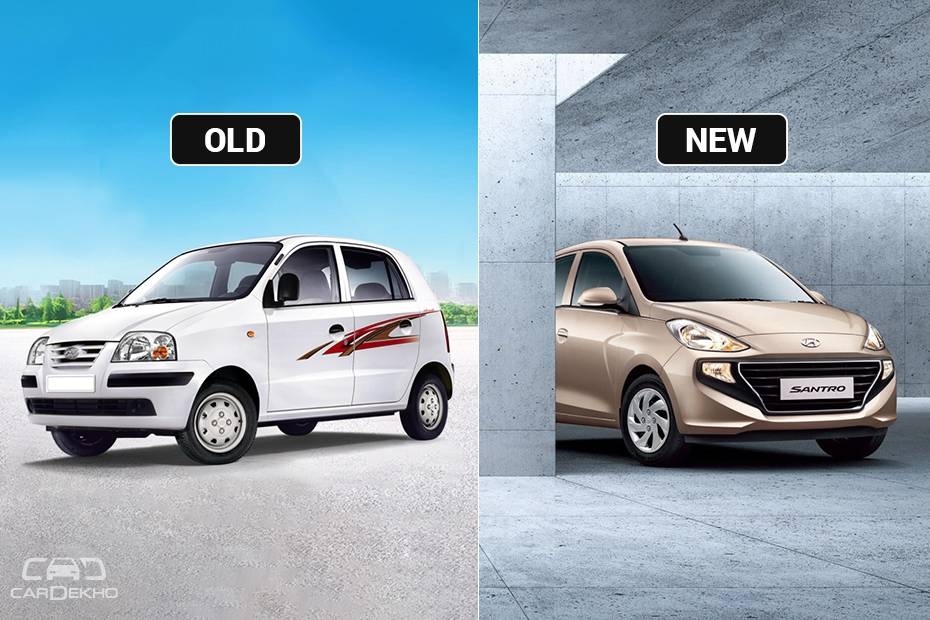Hyundai Santro Old vs New: Major Differences

Hyundai’s latest tall boy is a major departure from its predecessor. But in what measures? We find out

Hyundai, which began its Indian innings with the Santro back in September 1998, has launched an all-new hatchback with the same moniker. The new-gen Santro comes more than three years after the older version was discontinued. So without further ado, let’s check out what sets the two hatchbacks apart.
Design
Both versions of the Santro sport a tallboy design. But that’s where the similarities end. The old Santro had a sober front end with a triple slat front grille while the current one receives Hyundai’s proprietary ‘cascading’ grille. Flanking the grille of the older car were rectangular headlamps. The new one, on the other hand, has upswept headlamps that are possibly inspired by the Grand i10 .

The old Santro’s side profile featured slight creases on the front and rear wheel arches and that has been carried forward on the new one as well, albeit in a much more radical manner. It’s topped off with a kink at the bottom of the rear window. At the rear, the previous Santro had a simple design layout with a high-set rear windshield and a set of vertically placed taillamps. In contrast, the new one has tail lamps similar to the Grand i10 and a stubby boot like the one seen on the now-discontinued Maruti Suzuki A-Star.
Dimensions
| Measurements (mm) | Old Santro | New Santro |
| Length | 3565 | 3610 |
| Width | 1525 | 1645 |
| Height | 1590 | 1560 |
| Wheelbase | 2380 | 2400 |
| Wheel size | 13-inch | 14-inch |
The new Hyundai Santro has grown in almost every aspect, including its tyre size. Although it’s a little shorter, we are happy to report that the headroom doesn’t appear compromised. You can read more about our initial impressions of the new Santro here.
Note: Hyundai is yet to officially release interior images. However, since we’ve sat in the car and have driven it as well, we can say that the interior quality appears to be a big improvement over the previous Santro.

Engine
| Old Santro | New Santro | |
| Engine | 1.1-litre, 4-cylinder petrol | 1.1-litre, 4-cylinder petrol |
| Power | 63PS | 69PS |
| Torque | 98Nm | 99Nm |
| Transmission | 5-speed MT | 5-speed MT/AMT |
The 1.1-litre Epsilon engine that powered the older Santro has been thoroughly reworked for the new one. It now produces higher power and torque figures as well. This engine also has the advantage of an extra cylinder in comparison to all of its direct competitors, which make do with 3-cylinder engines, and that should make it more refined as well. In a first for any Hyundai, the new Santro will feature a new 5-speed AMT developed in-house. It will be available with a manual transmission as well, like before. This engine will also be available with a factory-fitted CNG kit straight from the factory.

Infotainment System
Four years ago, an infotainment system wasn’t really a part of the feature list of an entry-level or compact hatchback. Thus, the previous Santro had a simple single-DIN audio unit with AUX and USB connectivity. The new one is a major step up in that aspect as it gets a 7-inch touchscreen unit with Apple CarPlay, Android Auto, Bluetooth and AUX-in connectivity.
Safety Features
The older Santro didn’t offer either airbags or ABS with EBD. What it did offer were front and rear seat belts, day/night IRVM, keyless entry, speed sensitive door locks and engine immobilizer. The new 2018 Hyundai Santro gets dual front airbags, ABS with EBD, rear parking camera with sensors and fog lamps on offer as well. Driver-side airbag and ABS will be standard.
All the updates in the new Hyundai Santro seem to be at par or even better than the competition in some aspects. What remains to be seen is how it fares against rivals on the price chart.
This Story has not been edited by ABP News. It has been published through cardekho.com feed directly.






































